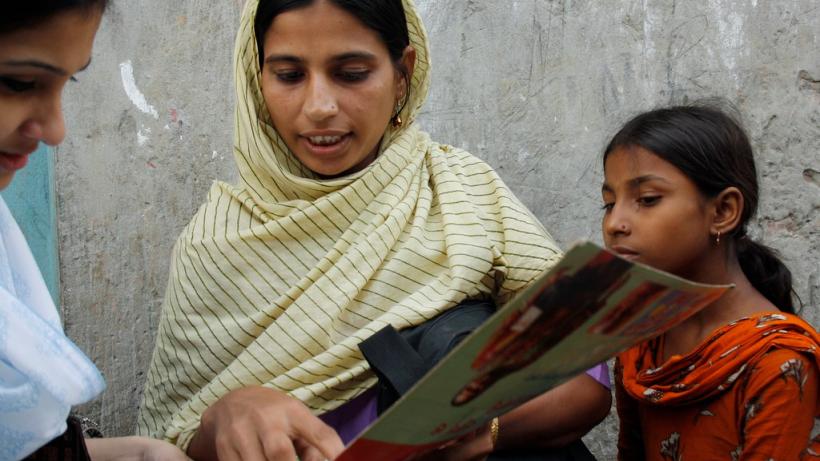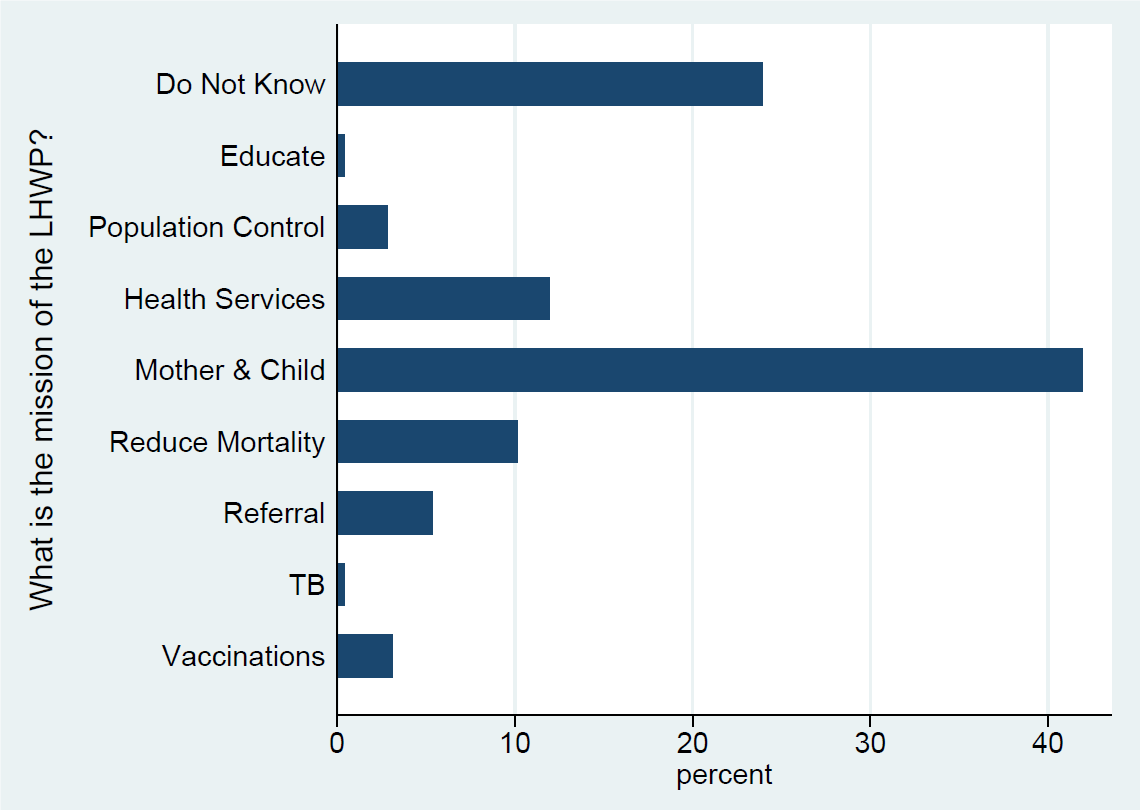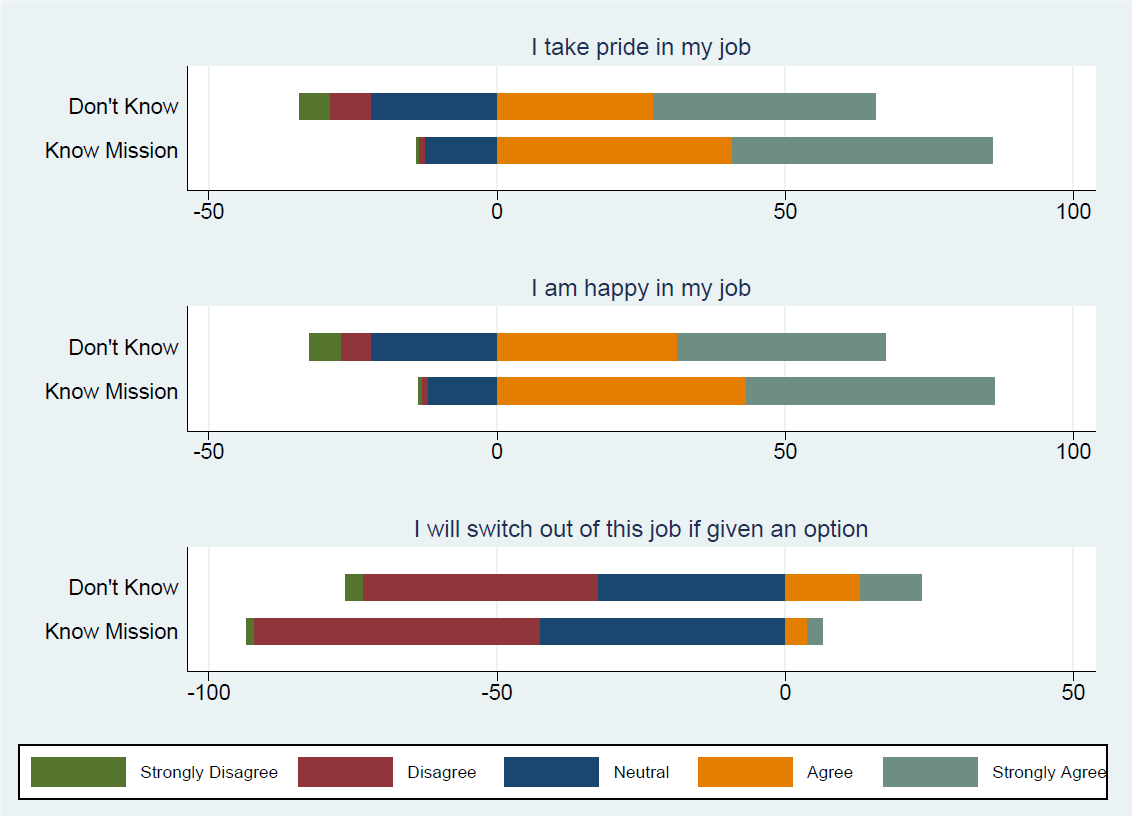
Mission creep and motivation among community health workers in Pakistan
Poor communication and multiple tasks from the Department of Health and Lady Health Worker Programme managers renders workers unsure of their mission and unmotivated.
Pakistan is home to high child mortality rates. According to the Pakistan Social and Living Measurement (PSLM) Survey 2014-15, in rural Khyber Pakhtunkhwa (KP), one in ten children suffer a bout of diarrhoea in their final days. 13,600 health workers are employed under the Lady Health Worker Programme (LHWP) in KP to help mothers deal with the onset of such symptoms (Government of Pakistan Statistics Division, 2016). However, almost none consult with a community health worker for treatment.
The underutilisation of basic and preventive healthcare among mothers can be attributed to the inefficiency of healthcare workers: The programme appears to have lost sight of its objectives on account of mission creep; where duties other than the core responsibly are considered more important.
The study: Mission creep among community health workers in Haripur District, KP
Pakistan has roughly 100,000 community health workers hired under the LHWP. The programme was first implemented in 1994 to provide integrated preventive and basic health services directly and accessibly to poor rural communities. In practice, workers instead dedicate their manpower to public services as diverse as monitoring the environment for dengue mosquito larvae (Yusufzai, 2018) to undertaking census activities (Dawn, 2011).
Mission creep has led to community health workers not being motivated to perform their basic duties. Workers are unsure about their basic mission and instead focus on whatever activity they believe to be the priority of the month.
Figure 1: The Lady Health Worker Programme mission

The findings: Mission and motivation
Workers’ beliefs about their mission are widely dispersed. A significant proportion of them, nearly 25%, do not know their mission. This reveals that one in four workers employed to be the backbone of community based preventive healthcare are unaware of the mission of their job. Among those who do know about the mission, a significant proportion confuse one component of their job with the broader mission: Some workers believe their mission is to refer women and children to hospitals.
Only about half of the workers report something that can be considered to capture the essence of their work; claiming their mission is to help improve mother and child health. A significant portion of workers are unable to identify what the mission of the LHWP is. This could explain the unmotivated workforce.
Figure 2: Knowledge of mission and motivation

Notes: The horizontal access displays the percentage of answers reported on a scale from negative to positive. A neutral answer is counted as negative.
Figure 2 reports the relationship between knowledge of mission and different measures of the motivation of workers (see the individually assigned titles). We condense eight categories of mission (reported in Figure 1) as “Know Mission”, while “Don’t Know” is considered a single category.
Figure 2 reveals that workers who claim to have some knowledge of mission are motivated to be part of the LHWP. They are more likely to state they take pride in their work and are happy in it. They are also less likely to consider switching out of their current job. A caveat is that these are just correlational figures and do not claim any causality. Even so, it is important to note that a worker who is aware of their task is more motivated to be part of the programme.
Refocusing the mission
Wide divergence in beliefs about the mission and motivation of workers exist because the Department of Health and managers of the LHWP do not communicate with workers effectively. The absence of communication and managers deciding on an ad hoc basis what workers need to focus on from season to season explains why health workers are demotivated to perform their duties. This has resulted in a broken basic health and preventive care system. Diseases that were once almost eliminated, such as polio, are re-emerging because the Department and its workers have lost sight of the core mission.
If the LHWP was to reorient its staff towards their core mission of promoting comprehensive preventive and basic healthcare for mothers and children, the health of many could improve and child mortality could be reduced. Until then, there will always be a need for emergency measures since the core system required to prevent the rise of emergencies is not functioning.
Editor’s Note: This blog is part of the IGC’s 10 year celebration series. This blog is linked to our work on public sector effectiveness.
References:
Dawn (2011). “LHWs to resume movement after census”, Dawn News. Accessible: https://www.dawn.com/news/616983
Government of Pakistan Statistics Division (2016). Pakistan Social and Living Measurement Survey: 2014-15, Pakistan Bureau of Statistics Islamabad. Accessible: http://www.pbs.gov.pk/sites/default/files//pslm/publications/PSLM_2014-15_National-Provincial-District_report.pdf
Yusufzai, Ashfaq (2018). “Health dept’s anti-dengue plan for Khyber hit by jurisdiction issue”, Dawn News. Accessible: https://www.dawn.com/news/1432531/health-depts-anti-dengue-plan-for-khyber-hit-by-jurisdiction-issue

